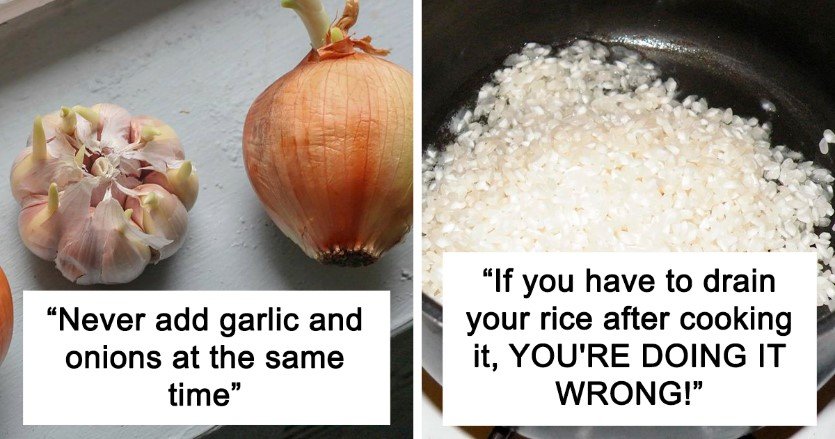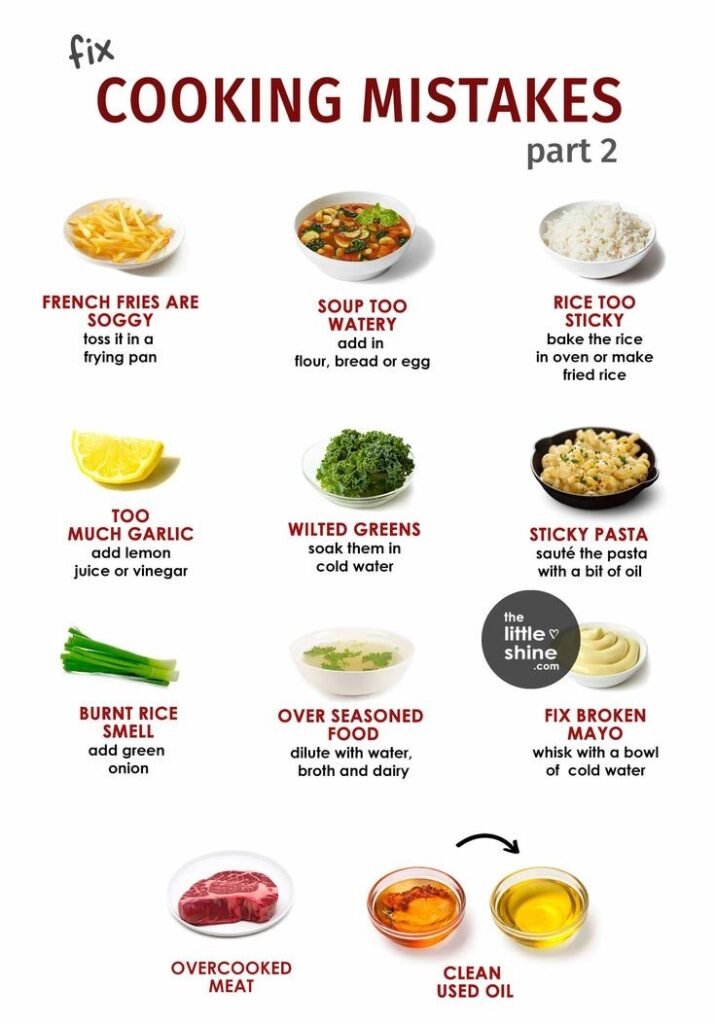Cooking Mistakes You Might Be Making (and How to Fix Them)
Cooking is one of life’s most rewarding skills. A great meal brings people together, nourishes the body, and sparks joy. But let’s be honest—sometimes, even with the best intentions, we make mistakes in the kitchen. The good news is that most cooking mistakes are easy to fix once you know what they are.
In this guide, we’ll explore common cooking mistakes you might be making—and exactly how to fix them. Along the way, we’ll share real-life examples, case studies, and chef-approved advice so you can become more confident in the kitchen.
1. Overcrowding the Pan
Story: Alex, a college student new to cooking, often sautéed chicken by piling it all in one pan. Instead of golden, crispy chicken, he ended up with pale, soggy pieces swimming in liquid.
The mistake: Putting too much food in the pan at once lowers the temperature, causing food to steam instead of sear.
The fix: Cook in batches. Give each piece space so heat circulates evenly. A golden crust forms when food has contact with hot pan surfaces—not when it’s stacked like laundry.
2. Not Letting Meat Rest
Case Study: A test by America’s Test Kitchen compared steaks sliced immediately vs. after resting 10 minutes. The rested steak retained 20% more juices, while the un-rested one bled out onto the cutting board.
The mistake: Cutting meat right after cooking causes juices to escape, leaving it dry.
The fix: Always let meat rest. For steaks, 5–10 minutes is ideal; for roasts, 15–20. Cover loosely with foil to retain warmth.
3. Using Dull Knives
Story: Maria thought she was avoiding accidents by using her old, dull knife. But one evening, she slipped while cutting an onion and nicked her finger. Ironically, dull knives are more dangerous than sharp ones.
The mistake: Dull knives crush ingredients instead of slicing cleanly, increasing the risk of slipping.
The fix: Sharpen knives regularly with a honing rod or professional service. A sharp knife improves efficiency and safety.
4. Overcooking Pasta
Case Study: According to Barilla’s research, Americans often overcook pasta by 2–3 minutes, resulting in mushy textures that don’t hold sauce well.
The mistake: Boiling pasta too long until it’s soft and sticky.
The fix: Cook al dente. Test a piece 1–2 minutes before the package time ends. Reserve a cup of starchy pasta water to help sauces cling beautifully.

5. Ignoring Preheating
Story: Tom once baked cookies without preheating the oven, and they spread into flat puddles instead of chewy rounds.
The mistake: Skipping preheating means uneven cooking and poor texture, especially in baked goods.
The fix: Always preheat your oven for at least 10 minutes. For stovetop cooking, preheat pans so food sizzles immediately on contact.
6. Overstirring or Undermixing
Case Study: A baking instructor at King Arthur Baking demonstrated two muffins: one mixed just until combined, and one overmixed. The overmixed muffin was tough and dense due to excess gluten development.
The mistake: Stirring too much (especially in baking) or not mixing enough (leading to uneven seasoning).
The fix: Follow recipes carefully. In baking, mix only until ingredients are incorporated. In cooking, stir enough to evenly distribute flavors but avoid constant motion that breaks food apart.
7. Not Seasoning Properly
Story: Sarah tried cooking soups for her family but always found them bland. She realized she was sprinkling salt only at the end instead of layering seasoning throughout the cooking process.
The mistake: Adding salt and spices only once, or not tasting along the way.
The fix: Season in layers. Add salt early to help flavors develop, then adjust toward the end. Taste as you go—it’s what chefs do constantly.
8. Using the Wrong Oil
Case Study: A University of Illinois food science study found that extra virgin olive oil breaks down at high heat, losing nutrients and developing off-flavors.
The mistake: Using oils with low smoke points (like olive oil) for frying or searing.
The fix: Use high-smoke-point oils like avocado, grapeseed, or canola for high-heat cooking. Save olive oil for dressings and drizzling.
9. Not Reading the Recipe First
Story: Kevin once started a curry recipe without realizing it required overnight marination. Dinner plans quickly turned into takeout.
The mistake: Diving in without understanding steps, timing, or equipment.
The fix: Read recipes start to finish before beginning. Gather ingredients (mise en place) so you’re never scrambling.

10. Forgetting to Taste and Adjust
Case Study: Professional chefs at culinary schools emphasize “taste, adjust, taste again.” Dishes that taste bland in home kitchens often lack that final adjustment.
The mistake: Cooking strictly by the book without personal tasting.
The fix: Trust your palate. Add acid (lemon, vinegar) to brighten, salt to deepen, or herbs to freshen before serving.
The Psychology of Cooking Mistakes
Why do home cooks make these errors? Often it’s:
Rushing (skipping preheating or resting).
Inexperience (not knowing about smoke points or seasoning).
Fear (overstirring or underseasoning out of caution).
Case Study: A 2021 survey by Kitchen Stories App found that 68% of beginner cooks lacked confidence, which led to overcompensating mistakes like overcooking or oversalting.
The fix isn’t perfection—it’s awareness. Once you know the common pitfalls, you can avoid them and improve over time.
How to Recover From Mistakes
Even pros make cooking mistakes, but they know how to fix them:
Too salty? Add potatoes, rice, or a squeeze of lemon.
Overcooked meat? Shred it and use in tacos, soups, or casseroles.
Burned bottom of a pot? Transfer contents to a clean pot immediately; don’t scrape the burned bits.
Dry cake? Brush with simple syrup or milk soak to revive moisture.
Story: Julia Child famously dropped a potato pancake on live TV, picked it up, and said, “When you’re alone in the kitchen, who is going to see?” Mistakes are opportunities to learn, not failures.
Final Thoughts
Cooking mistakes happen to everyone—from beginners to seasoned chefs. What separates a struggling cook from a confident one is the ability to recognize mistakes, fix them, and learn from them.
By giving food space, seasoning properly, respecting rest times, and trusting your senses, you’ll transform your cooking from stressful to joyful. And remember: the best cooks in the world became great by making—and fixing—many mistakes along the way.
References
America’s Test Kitchen – The Science of Resting Meat
Barilla – How to Cook Pasta Properly
Cornell University – Cooking Confidence Survey
King Arthur Baking – Mixing Methods and Gluten Development
Cook’s Illustrated – Seasoning in Layers
USDA – Safe Knife Handling Tips
University of Illinois – Oil Smoke Point Research
Kitchen Stories App – Cooking Habits Report 2021
New York Times Cooking – Recovering from Kitchen MistakesJulia Child – The French Chef Archives
